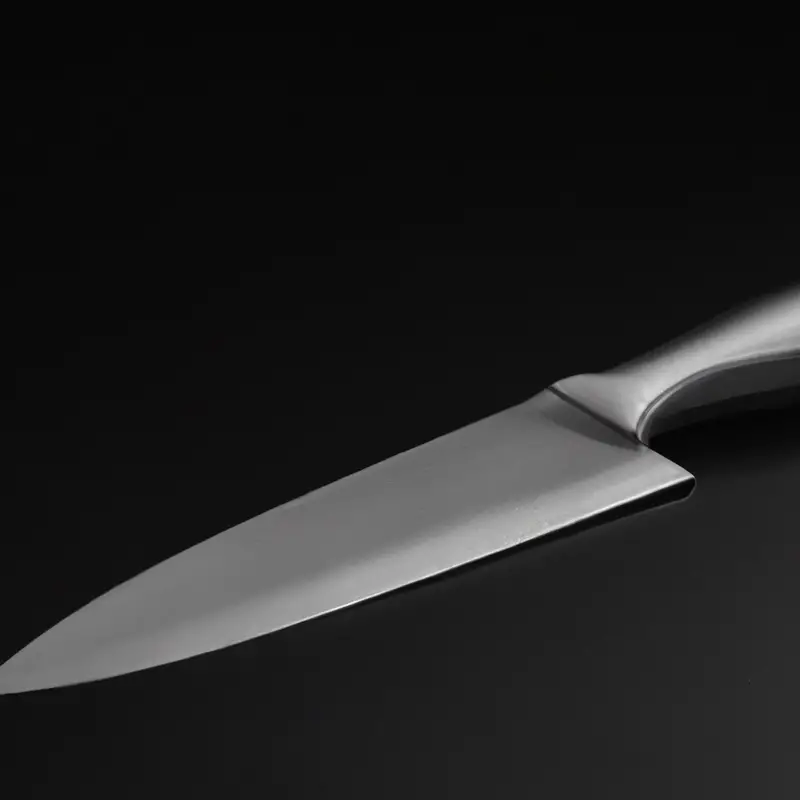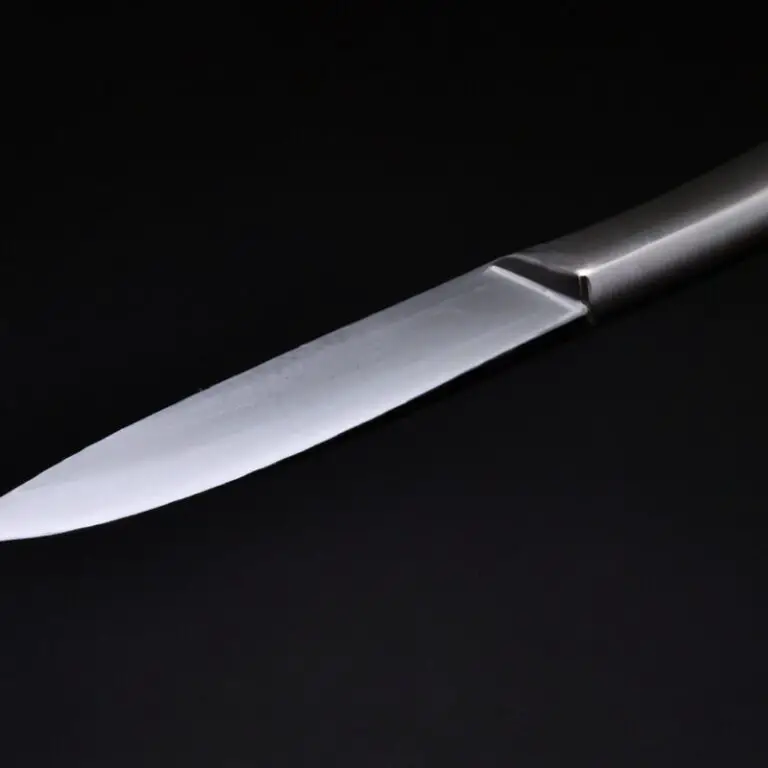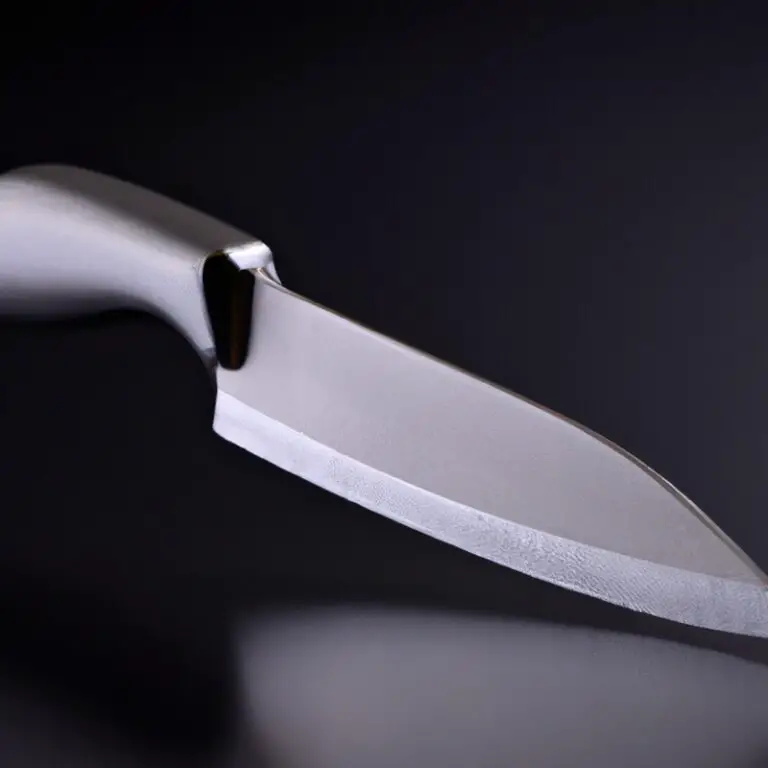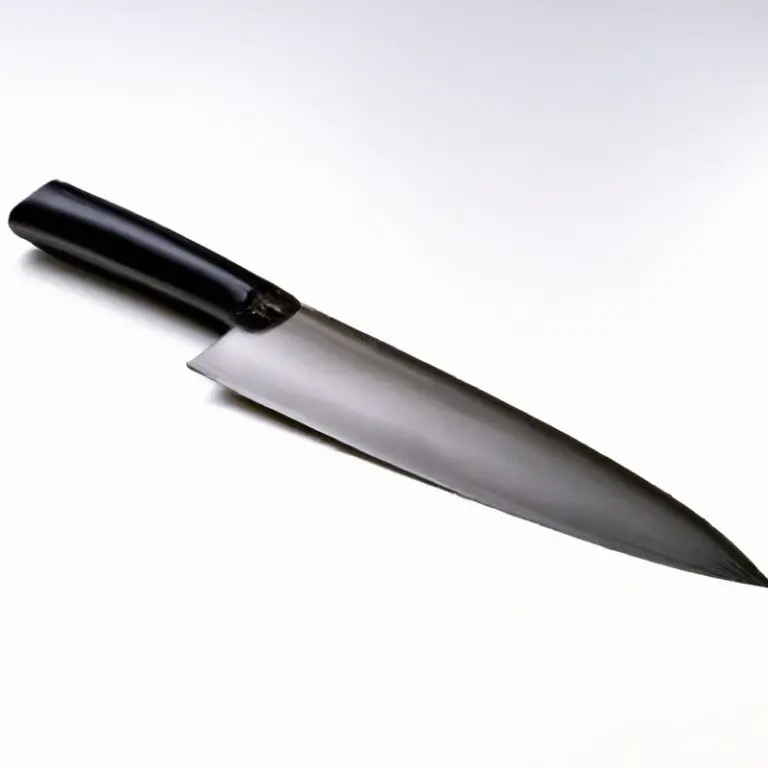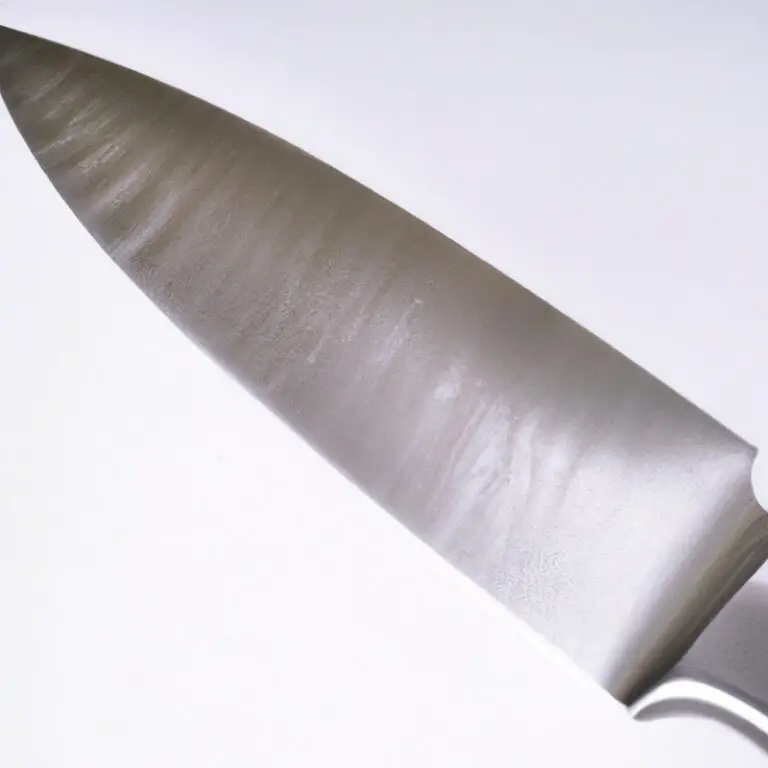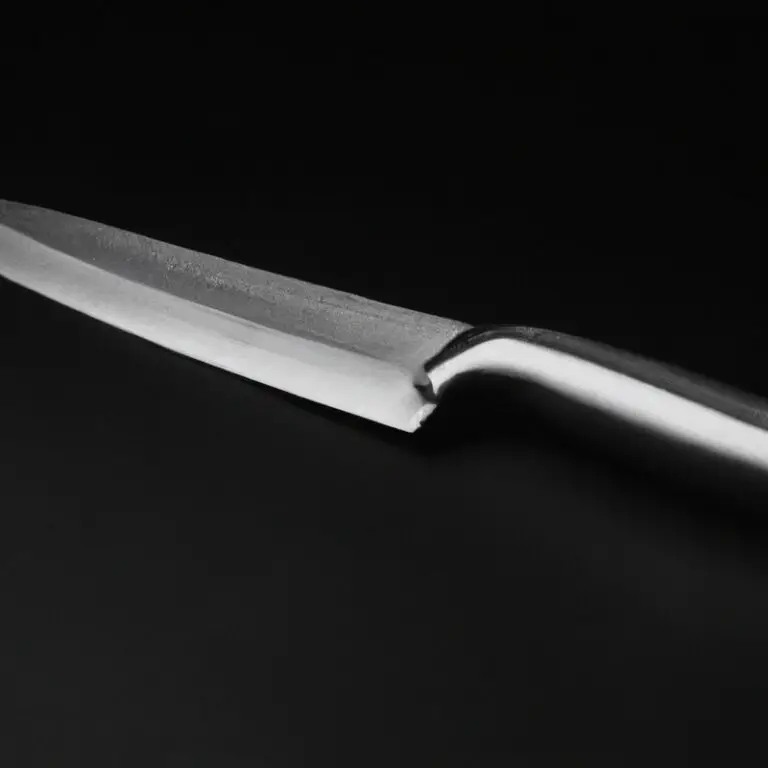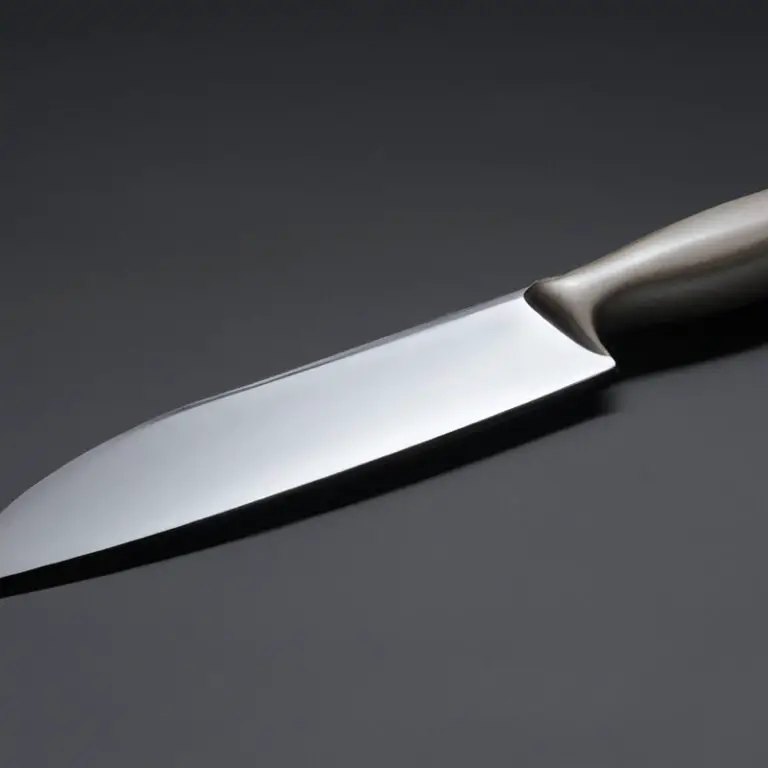How To Improve Your Cutting Skills With a Santoku Knife? Slice Like a Pro!
Key Takeaways:
- A Santoku knife is an excellent tool for improving your cutting skills due to its unique design and sharpness.
- Proper technique, such as using a rocking motion and maintaining a consistent angle, is crucial when using a Santoku knife to enhance its effectiveness.
- Regular maintenance, including sharpening and honing, is essential to keep your Santoku knife performing at its best and prolong its lifespan.
- With practice and patience, incorporating a Santoku knife into your kitchen routine can lead to faster and more precise cutting, ultimately improving the quality of your cooking.
Are you tired of struggling with your cutting skills in the kitchen? Look no further than a Santoku knife.
With its superior sharpness and versatility, this Japanese blade can help streamline your meal prep and elevate your cooking game.
In this article, I will guide you through everything you need to know about using a Santoku knife, from choosing the right one to mastering various cutting techniques. By the end, you’ll be a Santoku pro, impressing yourself and your dinner guests with your newfound slicing and dicing finesse.
| Steps | Description |
|---|---|
| Step 1 | Choose the right Santoku knife: Look for a Santoku knife with a blade length between 5 and 7 inches (about 12 to 18 cm). The blade should be made of high-quality stainless steel and have a sharp edge. |
| Step 2 | Hold the knife correctly: Grip the handle with your dominant hand and place your thumb and index finger on either side of the blade’s base. Wrap your other fingers around the handle for support. |
| Step 3 | Position your cutting board: Use a sturdy cutting board that won’t slip while you cut. Place a damp towel underneath the board to prevent it from moving. |
| Step 4 | Use the correct cutting technique: The Santoku knife is ideal for making slicing and chopping movements. Cut food by using a fluid and continuous motion, using a rocking motion for chopping or a slicing motion for softer foods. |
| Step 5 | Keep the blade sharp: A dull knife can be more dangerous than a sharp one. Use a honing steel or a sharpening stone to keep your knife sharp. |
| Step 6 | Clean the knife properly: Wash your Santoku knife by hand with mild soap and water. Dry it with a soft cloth and store it in a knife block or on a magnetic strip. |
Understanding the Santoku Knife: A Brief Introductory Guide
A Santoku knife is a Japanese multipurpose knife that is similar to a western chef’s knife. The name Santoku means “three virtues” which refers to its ability to handle three types of tasks: slicing, dicing and mincing.
The Santoku knife typically has a blade length of 5 to 8 inches with a flat edge and a drop point tip.
The blade is wider and shorter, making it easier to handle. It is also thinner than a chef’s knife, which means that it may require more frequent sharpening.
The blade of the Santoku knife is made of high-quality steel that holds a sharp edge for a long time.
It is ideal for precise cutting and slicing of meats, vegetables, and fruits. The wide blade also allows for easy scooping and transferring of chopped ingredients.
When choosing a Santoku knife, look for one that feels comfortable in your hand and has a sturdy handle.
The weight should also feel balanced to ensure it is easy to control and maneuver. Overall, the Santoku knife is a versatile and useful tool that can help improve your cutting skills in the kitchen.
With its unique design and features, you can achieve precise cuts and slices every time.
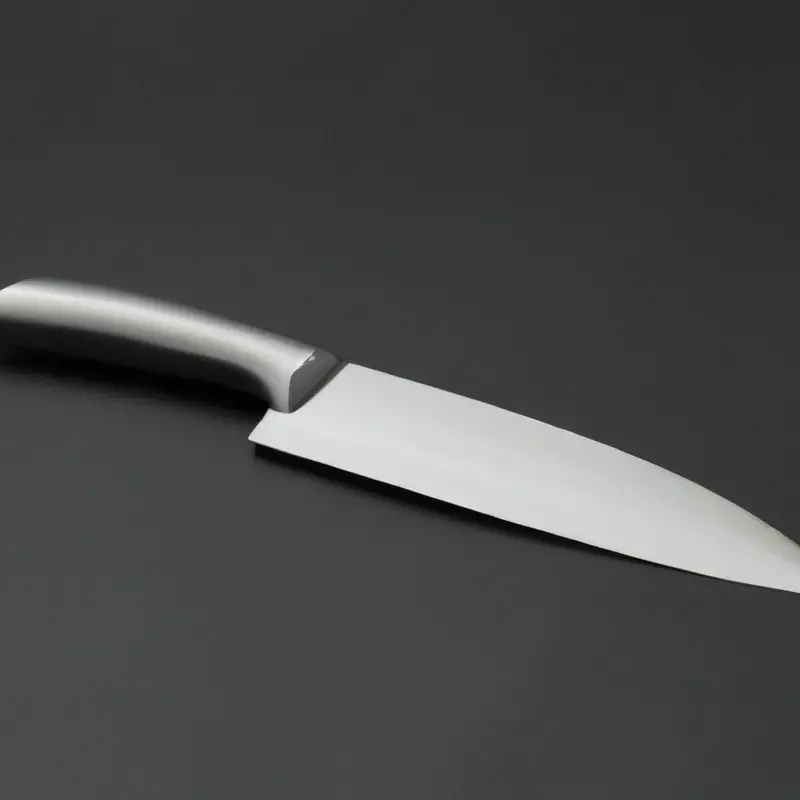
Choosing the Right Santoku Knife: Factors to Consider
When selecting a Santoku knife, there are several factors to consider. Material, blade length, weight, handle, and price should all be taken into account.
Material: High-carbon stainless steel is a popular choice due to its ability to hold a sharp edge, resist rust and discoloration, and be less prone to chipping.
Blade Length: Santoku knives range from 5 to 7 inches in length. The best blade length for you depends on your hand size and the tasks you’ll perform.
Weight: Choose a knife that feels comfortable and balanced in your hand.
A heavy knife can quickly tire you out, while a too-light knife may require more effort for controlled cutting. Handle: The handle of the Santoku Knife should be designed ergonomically.
Some handles are made of wood or plastic, while others have a metal finish, and each material has its pros and cons.
Price: The price range of Santoku knives varies depending on the brand, features, and materials used in manufacturing. Opt for a quality knife, but don’t break the bank if you’re just starting.
Choosing the right Santoku Knife can make a significant difference in your food preparation experience.
Take your time to consider the factors above and choose the knife that best suits your needs.
Sharpening Your Santoku Knife: Simple Tips and Tricks
To keep your Santoku knife sharp and efficient, follow these simple tips and tricks:
- Use a honing steel, sharpening stone, or electric sharpener to sharpen the blade regularly.
- Sharpen at a 15-20 degree angle for optimal results.
- Use a consistent and smooth motion when sharpening the blade.
- Avoid using serrated knives or ceramic sharpeners on your Santoku knife.
- Test the sharpness of the blade by slicing through a piece of paper or an onion with ease.
- Keep the blade dry to avoid corrosion and damage.
- Store the knife in a wooden block or sheath to prevent damage to the blade and to protect yourself from accidental cuts.
By following these simple steps, you can maintain the sharpness and efficiency of your Santoku knife while ensuring it lasts for years to come.
Holding the Santoku Knife: Proper Grip and Technique
Proper grip and technique are crucial when using a Santoku knife. To hold the knife properly, grip the handle firmly with your dominant hand.
Your thumb should be on the spine of the blade and your fingers curled around the handle.
Keep your other hand steady on the food being cut. When using the Santoku knife, place the middle of the blade on the cutting board and use a gentle back and forth motion for chopping.
The blade should remain in contact with the cutting board at all times.
For slicing and dicing, use a rocking motion, moving the blade back and forth while keeping the tip steady. It’s essential to maintain a consistent grip and angle to avoid injury or uneven cuts.
Practice proper technique to achieve precision and efficiency in your cutting skills.
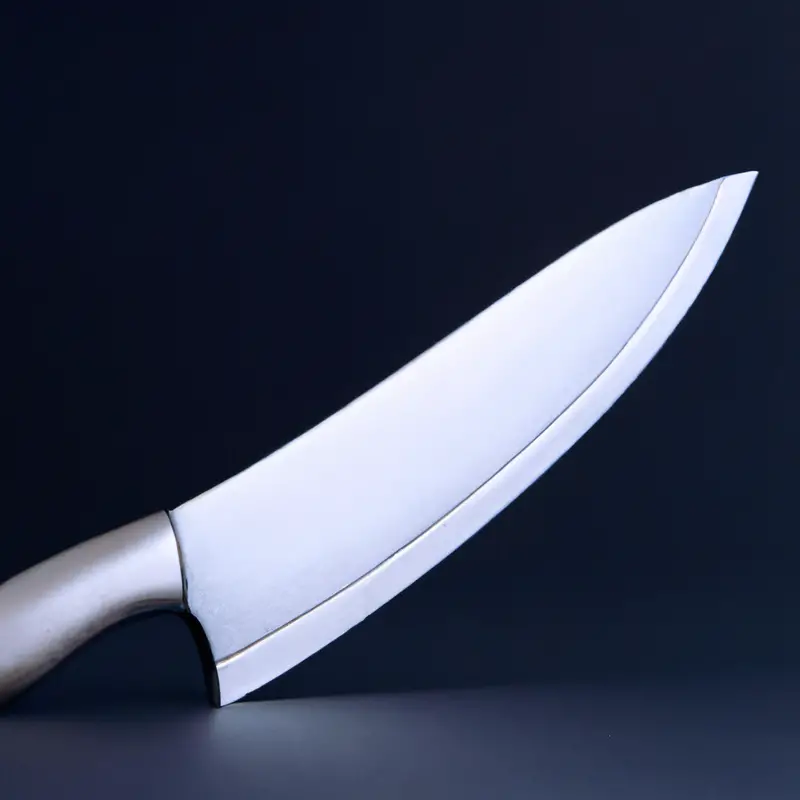
Chopping Techniques: The Best Way to Cut with a Santoku Knife
When it comes to chopping with a Santoku knife, the key is to use a smooth rocking motion rather than a traditional up-and-down motion. Begin by placing the tip of the knife on the cutting board and then, with a comfortable grip on the handle, rock the blade back and forth while keeping your guiding hand steady.
This technique allows for faster and more efficient chopping, especially when working with smaller ingredients such as herbs and vegetables.
Remember to use a consistent and controlled motion to avoid over-chopping or jagged cuts. Additionally, it’s important to keep your knife sharp to ensure the smoothest possible cuts.
Test out this technique next time you prep your ingredients to see how much smoother and faster your chopping process can be.
Slicing Techniques: Achieving Precision and Consistency
Santoku knives are specially designed for slicing, dicing, and chopping. To achieve precision and consistency with your Santoku knife, it’s essential to follow the proper slicing techniques.
- Hold the knife with a strong but relaxed grip, ensuring that your fingers are curled inwards, and the thumb is placed on the spine.
- Place the blade at a 45-degree angle to the food, then slice through it in a smooth, gentle motion.
- For uniform slices, maintain a consistent thickness throughout the cut.
- Use a back-and-forth motion for tougher foods like meats, and a smooth gliding motion for softer foods like vegetables.
- Always cut away from your body to avoid any accidents.
By mastering the above techniques, you can slice food evenly and achieve a professional finish. Ensure that you practice these techniques regularly to improve your cutting skills with a Santoku knife.
Dicing Techniques: Mastering the Art of Uniform Cuts
Dicing is a common technique used in the kitchen for cutting ingredients into uniform pieces. To achieve precise and consistent dicing with a Santoku knife, start by cutting off the top and bottom of the ingredients to create a flat surface.
Then, cut the ingredient into slices of the desired thickness.
Next, stack the slices on top of each other and cut them into strips before dicing them into small, uniform pieces. Another technique is to use a claw grip to hold the ingredient firmly and prevent finger injuries.
Mastering the art of dicing takes practice and patience, but with a sharp Santoku knife and the right technique, you can achieve perfect results every time.
Rock and Chop: Ready-to-Use Techniques for Faster Meal Prep
Using the rock and chop technique with a Santoku knife allows for faster meal prep by utilizing a back-and-forth rocking motion that easily cuts through meats and vegetables. To use this technique, hold the Santoku knife with your dominant hand and place the other hand on top to guide the blade.
Begin by chopping the ingredients into smaller pieces, and then use the rocking motion to chop and mince them into finer pieces.
The curved blade and wide belly of a Santoku knife make it the perfect tool for this technique and can save time in meal preparation. Experiment with different angles and pressures to find the perfect rock and chop technique for your needs.
Maintaining the Santoku Knife: Proper Storage and Care
To maintain the Santoku knife’s longevity, proper storage and care are essential. Here are some tips to ensure that your Santoku knife performs its best:
- Store in a knife block or on a magnetic strip; never store it loose in a drawer.
- Hand wash and dry your knife immediately after each use.
- Use a honing steel to keep the blade aligned between sharpening.
- Sharpen the blade properly with a whetstone or have it professionally sharpened.
- Do not use the Santoku knife to cut through bones or frozen foods, as this can damage the blade.
- Avoid using harsh detergents or abrasive sponges that can scratch the blade’s surface.
By following these simple steps, you can maintain your Santoku knife’s sharpness and precision, providing excellent performance for years to come.
Benefits of Using a Santoku Knife: Reasons to Switch from Your Usual Blade
There are several benefits of using a Santoku knife that may make you want to switch from your usual blade. Firstly, the Santoku knife’s pointed tip makes it easier to navigate smaller ingredients and make intricate cuts.
Secondly, the flat blade of the Santoku allows for more contact with the cutting board, resulting in more precise and even cuts.
Additionally, the wider blade of the Santoku knife can be used to easily scoop up and transfer ingredients. Lastly, the ergonomic design of the Santoku knife’s handle provides a comfortable grip and reduces hand fatigue during prolonged use.
These benefits make the Santoku knife a versatile and efficient tool in the kitchen.
Final Verdict
The Santoku knife is an indispensable tool for any home cook or professional chef. With its versatile design and unique features, it allows for efficient, precise, and comfortable cutting, enhancing the overall cooking experience.
By following the tips and techniques outlined in this guide, you can improve your cutting skills with a Santoku knife, achieve consistent and uniform results, and elevate your culinary creations to the next level.
Remember to choose the right knife, sharpen it regularly, hold it correctly, and master the different cutting techniques. With practice and patience, you will soon become a Santoku knife pro.
So why not switch from your usual blade and join the Santoku knife revolution?
Your taste buds will thank you.

